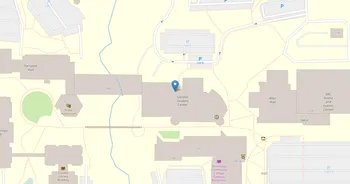New York School of Interior Design (NYSID) : Overview, Courses, Scholarships & Rankings
About New York School of Interior Design
Known for its singular focus on interior design, New York School of Interior Design builds designers through studio culture, steady critique, and real-world problem solving. Students move from concept to detail with attention to materials, lighting, and the way people actually live and work. Light-filled studios, digital labs, a materials resource area, and a design library support the work, while advising, career services, and helpful tech staff keep projects on track.
Life on the Upper East Side brings museums, galleries, and Central Park within an easy walk, plus showrooms and firms a subway ride away. The vibe is professional and close-knit, with pin-ups, guest lectures, student groups, and exhibitions that feel like the city itself. Portfolios get serious polish, and internships can grow from visiting critics and alumni connections. A juried review and end-of-year showcase spotlight the strongest work, a signature moment that signals you're ready for the field.
Key Institutional Details
Contact & Profile
Academic & Institutional
Academic Programs & Fields of Study
New York School of Interior Design (NYSID) offers 2 degree programs across 2 major academic fields, graduating approximately 176 students annually. The most popular fields by graduate volume are Arts (1 programs, 162 graduates) and Architecture (1 programs, 14 graduates). Explore program details, award levels, and graduate demographics below.
Arts (1 programs, 162 graduates)
Fine Arts, Design Studies and Creative Performance
| Program Name | Graduates | Gender Distribution | Award Levels | CIP Code |
|---|---|---|---|---|
| Interior Design | 162 |
|
Associate's
Bachelor's
Master's
Other Award
|
50.0408 |
Architecture (1 programs, 14 graduates)
Architectural Design and Construction Planning Services
| Program Name | Graduates | Gender Distribution | Award Levels | CIP Code |
|---|---|---|---|---|
| Architectural and Building Sciences | 14 |
|
Master's
|
04.0902 |
Admission Requirements & Test Scores
Comprehensive overview of admission criteria, standardized test score ranges, and application requirements for prospective students at New York School of Interior Design (NYSID).
Application Requirements
Data based on IPEDS for 2022-2023 academic year. Test score ranges represent the middle 50% of admitted students (25th-75th percentile). Requirements may vary by program.
Tuition, Fees & Estimated Costs
Overview of tuition rates, housing, and other annual education expenses for undergraduate and graduate students
Financial Aid & Student Support
Summary of scholarships, grants, student loans, and financial aid statistics for undergraduate students
Student Success Metrics
Graduation rates and post-graduation earnings to help assess student outcomes and long-term value of education.
Loan Burden & Repayment Outcomes
Breakdown of loan repayment rates and student debt levels by income and dependency status.
Frequently Asked Questions
Find answers to the most common questions about New York School of Interior Design (NYSID)
How much does it cost to attend New York School of Interior Design (NYSID)?
The annual tuition at New York School of Interior Design (NYSID) is $37,650 for in-state students. When including room and board, books, and other expenses, the total estimated cost is approximately $39,250 for in-state students. Additional costs include room and board $21,600 (off-campus) and books and supplies $1,600.
Data based on IPEDS program completions for 2022-2023 academic year. Tuition and cost estimates are approximate and may not include all fees, personal expenses, or transportation costs.
What academic programs and degree levels does New York School of Interior Design offer?
New York School of Interior Design (NYSID) offers 2 academic programs across 2 major fields of study, with available degree levels: Associate's, Bachelor's, Master's, Other Award.
Most popular program areas include:
- Fine Arts, Design Studies and Creative Performance (1 programs)
- Architectural Design and Construction Planning Services (1 programs)
Data based on IPEDS program completions for 2023-2024 academic year. Numbers reflect programs where students graduated, not all offered programs.
What is the acceptance rate for New York School of Interior Design?
New York School of Interior Design (NYSID) has an 60.3% acceptance rate and a 29.6% yield rate, making it selective.
Admission statistics breakdown:
- Total applicants: 179
- Students admitted: 108
- Students enrolled: 32
Data based on IPEDS for 2022-2023 academic year. Admission statistics may vary by program and application cycle.
What financial aid and scholarships are available at New York School of Interior Design?
New York School of Interior Design (NYSID) provides financial aid to 3% of first-time, full-time students, with average grants of $6,325 and average loans of $11,656.
Average financial aid amounts by type:
- Pell grants: $4,434
- State/Local grants: $500
- Institutional grants: $5,250
- Federal loans: $5,406
The university supports 8 students with grants and 8 students with loans annually.
Data based on IPEDS for 2022-2023 academic year. Financial aid amounts and percentages may vary by program, enrollment status, and individual circumstances.
What is the average salary for New York School of Interior Design graduates?
New York School of Interior Design (NYSID) graduates earn a median salary of $37,810 after 6 years and $48,041 after 10 years.
The salary range 10 years after graduation spans from $22,696 (25th percentile) to $77,068 (75th percentile).
Data based on IPEDS for 2022-2023 academic year. Salary data reflects graduates who received federal financial aid (approximately 60% of all graduates). Actual earnings may vary significantly based on program, location, and individual circumstances.
Related Universities




Found something useful? Help others discover it too! Share with friends, on social media, or save for later - every share helps someone find the information they need.